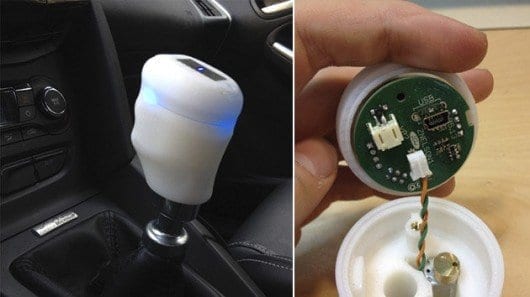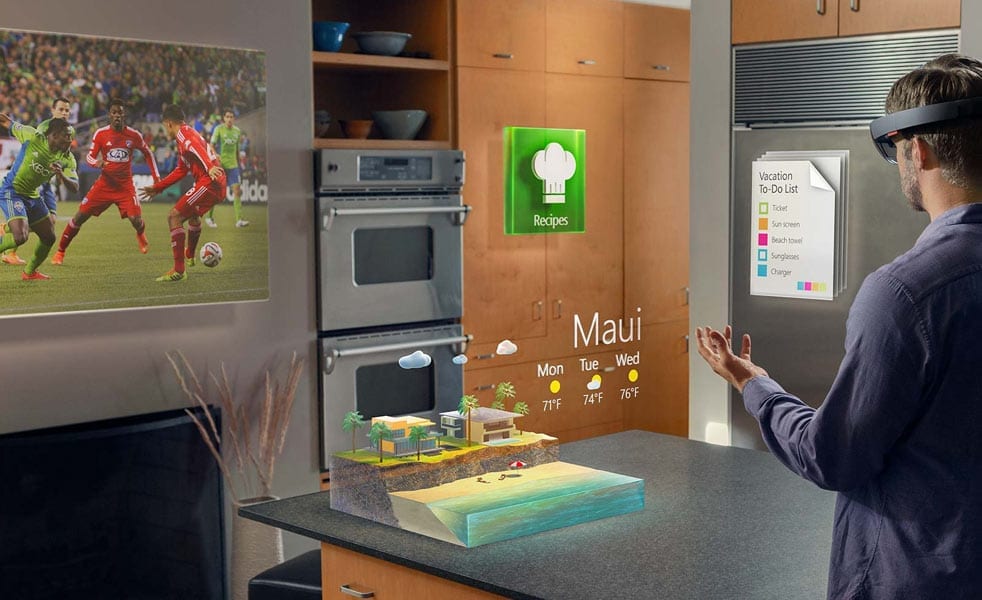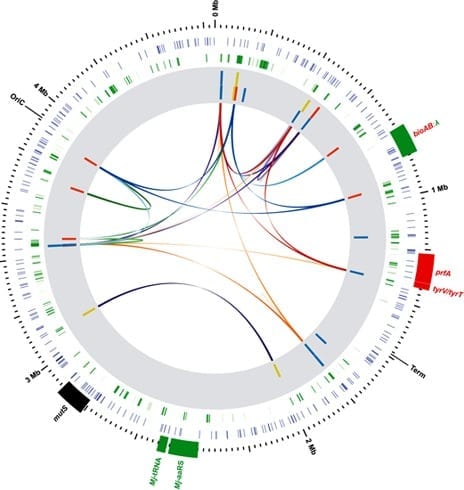
Tactile feedback is nothing new
It’s been used in telecommunications and in entertainment for decades, and it became a standard feature in the late 1990s in mobile phones and video games – where vibrations alert you to new messages or help you “feel” the forces exerted on your avatar. Haptic technology has been very much a bit player in the fields that it’s infiltrated, though, and only now are we seeing it begin to take its place alongside visual and audio tech as a key element in human-computer interaction.
Smartwatches such as the upcoming Apple Watch are embracing haptics to give you turn-by-turn directions. Researchers, meanwhile, are experimenting with haptic cues built into the steering wheel of cars for enhanced safety, and with tactile feedback built into touchscreens and public maps for more natural-feeling interactions.
Haptics enable deafblind people to browse the web (thanks to Morse Code) or even to play video games. In the gaming space, haptics is a fast-growing field thanks to the rise of virtual reality and the desire of players to feel just as viscerally as they see and hear their virtual environments. Haptic technology is also helping to train the next generation of surgeons, and improving simulations in the industrial sector for pilots and large machine operators.
The basics
Before we get into any of that, let’s step back a moment and look at what haptic technology is. In most cases it uses a kind of motor called an actuator to convert electrical, hydraulic or pneumatic energy into vibrations, which can be managed and controlled by software that determines the duration, frequency, and amplitude.
Smartphones typically use haptic technology for alerts and notifications, as well as for subtle feedback as you type messages or dial numbers on their touchscreens. Video game controllers use haptics now in the same way that they did almost two decades ago with the Nintendo 64 rumble pack and PlayStation DualShock gamepad – to lend a tangibility, felt through your hands gripping the controller, to an explosion or crash or a rough surface that you’re driving over.
But there’s a lot more that haptics can do, both at the lower resolutions of feedback offered by an Xbox or PlayStation controller (which amounts to little more than an on/off switch with dimmer controls for each of their two actuators) and at the higher resolutions that the latest haptic technology can provide (which allows for feedback localized to specific coordinates and even, at the cutting-edge level, according to how hard you press on the surface).
Haptics look set to be the next big thing in our interactions with the digital world.
Read more: Haptic technology: The next frontier in video games, wearables, virtual reality, and mobile electronics
The Latest on: Haptic technology
[google_news title=”” keyword=”Haptic technology” num_posts=”10″ blurb_length=”0″ show_thumb=”left”]
via Google News
The Latest on: Haptic technology
- Forcen closes funding to develop ‘superhuman’ robotic manipulationon April 28, 2024 at 5:31 am
Founded in 2015, Forcen said its goal is to enable businesses to easily deploy “ (super)human” robotic manipulation in complex and unstructured applications. The company added that its technology is ...
- Dell XPS 16 9640 Review: A Big, Bold and Brawny Creator Laptopon April 28, 2024 at 4:00 am
Dell's new 16-inch XPS model offers a unique design backed by strong performance and surprisingly long battery life. Just be prepared to pay for its many configurable charms.
- Hear iPhone alerts better by changing the default notification soundon April 28, 2024 at 3:00 am
The rollout of Apple's iOS 17 brought a subtle "Rebound" notification tone that's gotten some criticism. Kurt "CyberGuy" Knutsson explains a fix.
- The unsung hero behind the modernization of Windows laptopson April 27, 2024 at 4:30 am
We chat with Sensel about the technology behind haptic touchpads, look at some of their cool concepts, and more.
- Swiftpoint Z2 review: The most customizable gaming mouse ever madeon April 26, 2024 at 3:54 am
The Swiftpoint Z2 is an exceptional gaming mouse with more customizable functionality than we've ever had before in a mouse. Playing with it is like a rite of passage -- like getting a bespoke ...
- University of Maryland's new AI technology helps improve violin techniqueon April 25, 2024 at 2:49 am
T he University of Maryland is launching a new institute devoted to Artificial Intelligence (AI). But many programs are already using the technology, including one designed to help people learn to ...
- 5 considerations when choosing a haptics manufactureron April 25, 2024 at 12:21 am
That said, the manufacturing of haptic products is no small feat. It requires a blend of multidisciplinary expertise, careful consideration of user experience, seamless integration of technology, ...
- Razer Kishi Ultra is a full-sized controller for iOS and Android with DualSense-like hapticson April 23, 2024 at 7:26 am
The Razer Kishi Ultra is a full-sized USB-C controller for Android and iOS devices with pro-grade features and new Razer Sensa HD Haptics technology.
- Here’s how Phish is using the Sphere’s technology to give fans something completely differenton April 20, 2024 at 5:52 am
Phish opened its four-night stay at the Sphere Thursday with a four-hour show. The concert used the advanced technology in the $2.3 billion Las Vegas arena to give even the fans that have seen Phish ...
- Buy Rating Affirmed for Immersion (IMMR) on Strong Financials and Strategic Investments in Haptics and Education Sectorson April 18, 2024 at 6:45 am
Immersion (IMMR – Research Report), the Technology sector company, was revisited by a Wall Street analyst today. Analyst Hamed Khorsand ...
via Bing News










